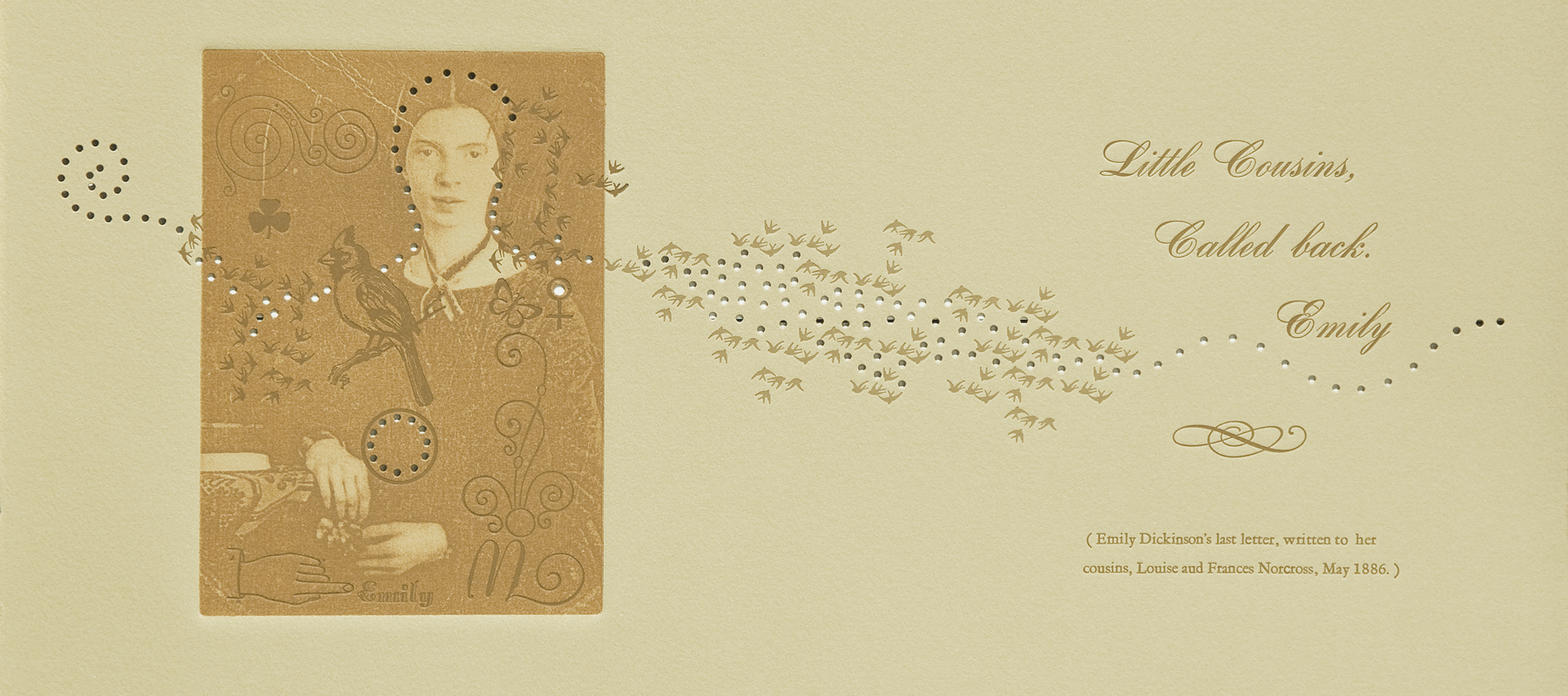Since the discovery of almost 1,800 poems after her death in 1886, readers and artists alike have studied, adopted, and celebrated the work of Emily Dickinson. As noted by poet and essayist Adrienne Rich, Dickinson’s work remains relevant in its focus on the feminine and the interior, in the literal sense of the domestic realm and, metaphorically, in the expression of the inner self. Five works in the Betty Boyd Dettre Library and Research Center’s exhibition Power in My Hand: Women Poets, Women Artists, and Social Change testify to the enduring legacy of Dickinson’s work.
In Emily Dickinson, a preparatory drawing for a place setting in her renowned installation The Dinner Party (1977), Judy Chicago (b. 1939) emphasized the link between sexuality, empowerment, and liberation using materials and techniques that would have been familiar to Dickinson and her Victorian milieu. Ribbon work references Victorian sewing techniques, while lace simultaneously embodies reticent femininity and oppression, a seemingly delicate fabric hardened and immobile in porcelain.
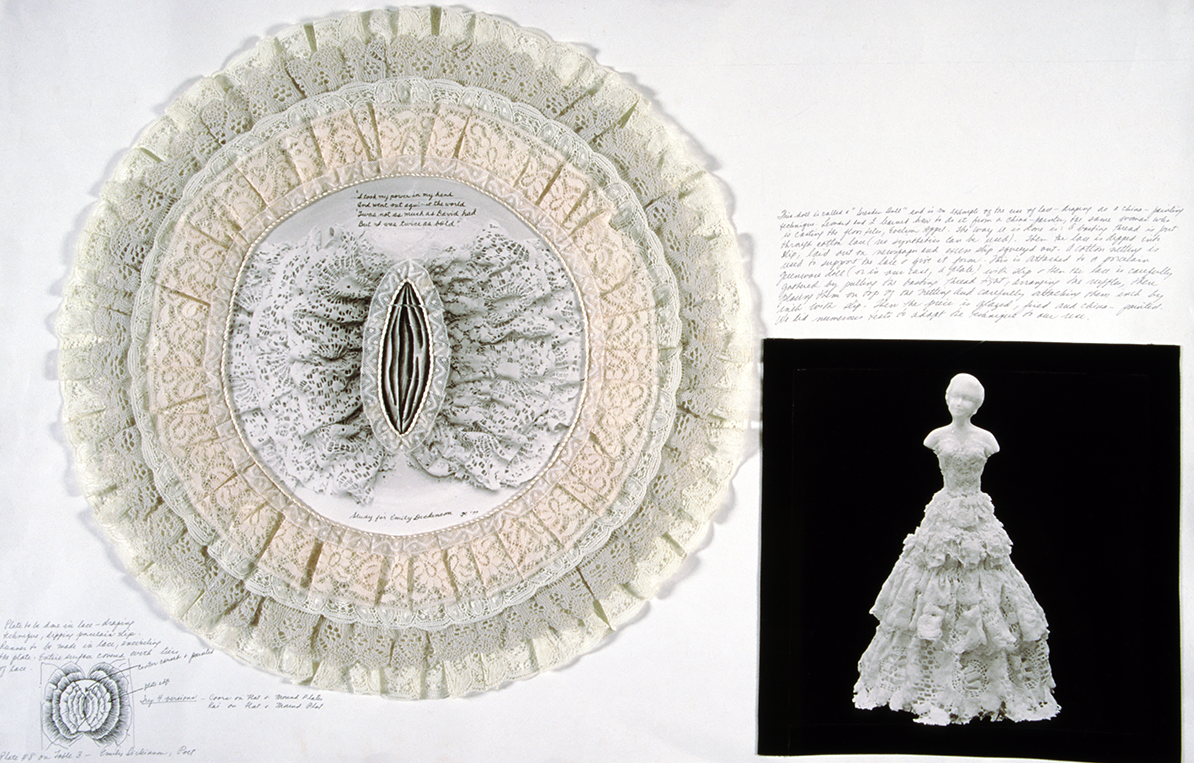
A tactile exploration of Dickinson’s work continues in the photography of Annie Leibovitz (b. 1949). The artist photographed a white dress of Dickinson’s against a sharp, dark background. This “portrait” of Dickinson opened Leibovitz’s book Pilgrimage, an exploration of the spaces and belongings of individuals she admires. The photograph evokes the same traditional femininity depicted by Chicago, but here the viewer must consider the absent body of the poet.
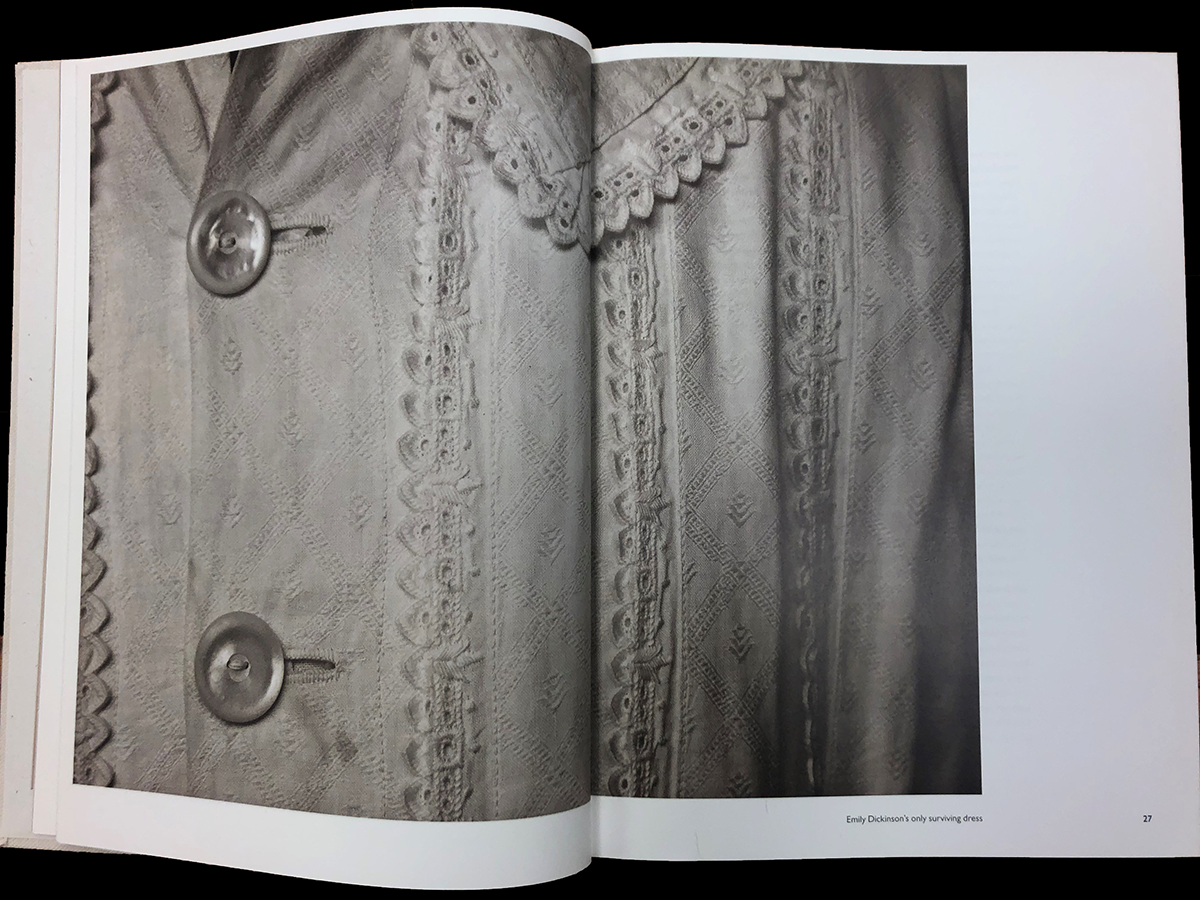
The delicate collages of multidisciplinary artist Lesley Dill (b. 1950) respond to Dickinson’s work by incorporating the poet’s text within them. In The Poetic Body—Gloves, Ears, Eyes (1992), Dill depicts the visceral experience of language, giving it an interpreted shape made from Japanese silk tissue paper, accented by letterpress, and structured into collage. Dill’s collage is exhibited alongside a group of works that reflect on spirituality, faith, and the nature of the psyche.
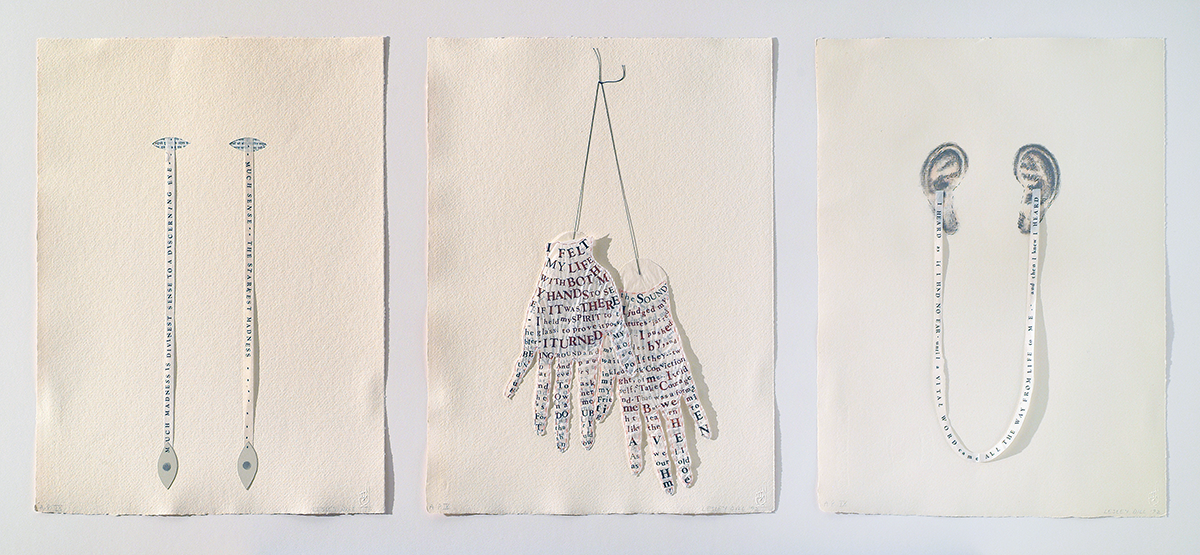
Reframing Dickinson’s cloistered life, artist Sophie Herxheime explored the idea that one can be fixed in space physically, but mobile through imagination and intellect. Her work Your Candle Accompanies the Sun: My Homage to Emily Dickinson (2017) was created during a time in her own life when she was “stuck indoors, quite anxious, unable to do much.” Through collages that include Dickinson’s work, Herxheimer’s own poetry, and images cut from a 1930’s book of Swiss tourist photos, the piece demonstrates the creative potency of inspiration and relative isolation.
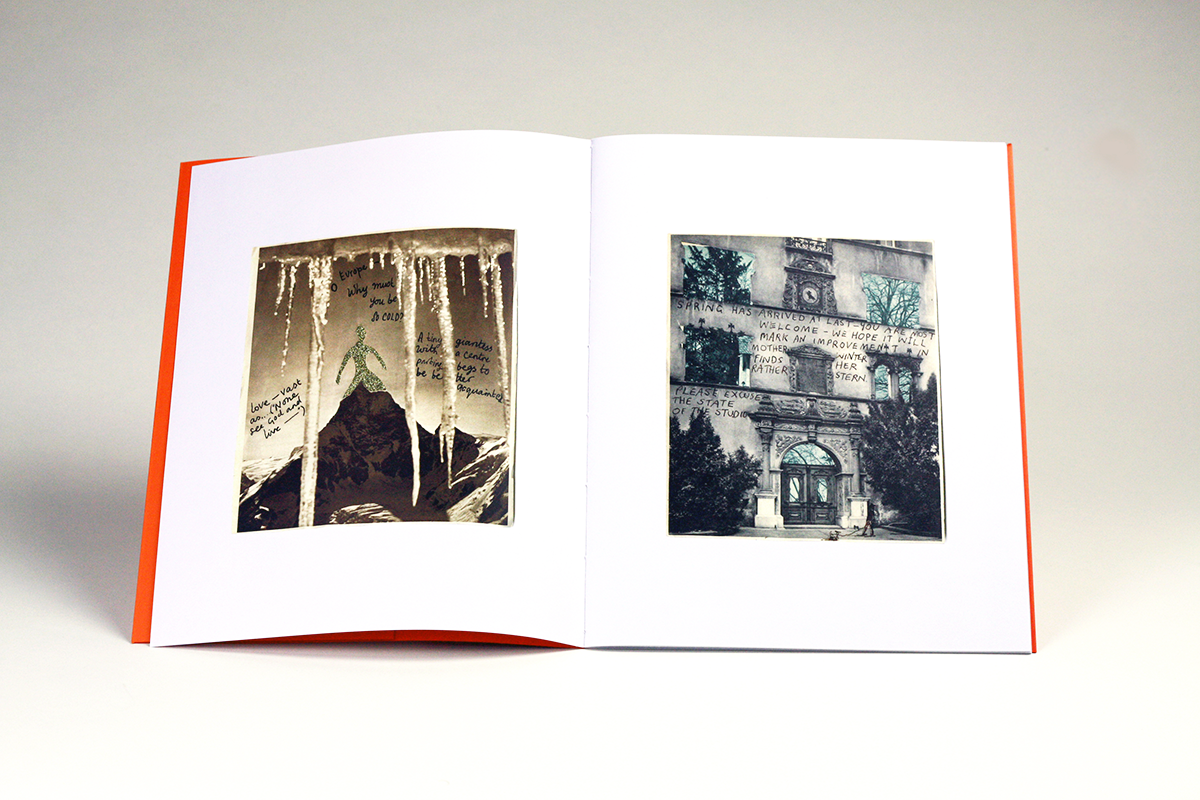
Printmaker and book artist Sue Huggins Leopard developed an interest in writers and their work, and she began to integrate poetry into her own print projects. She uses the technical process of bookmaking as a way to picture the invisible and embody emotions. Her work Past Surmise: Twelve Poems by Emily Dickinson (2008) explores and communes with Dickinson’s delight in the “small miracles of nature and being.”
In describing her creative process, Dickinson once wrote, “I work to drive the awe away, yet awe impels the work.” In their visual homages to Dickinson, these five artists keep the spirit of Dickinson, and her awe, alive.
